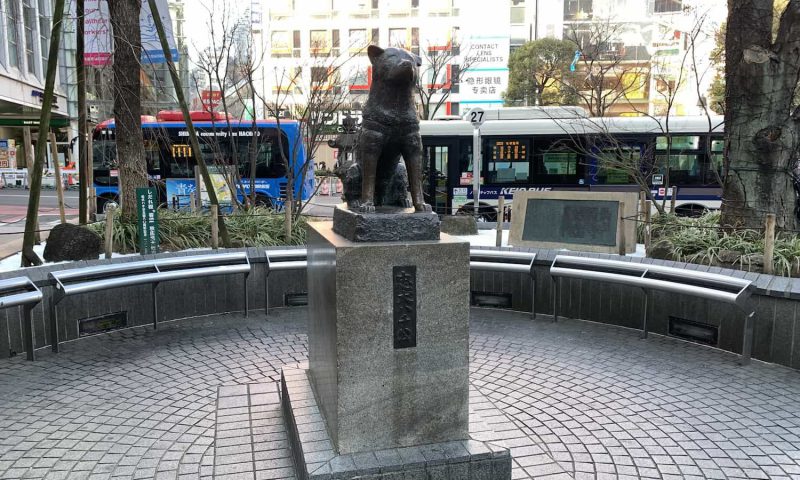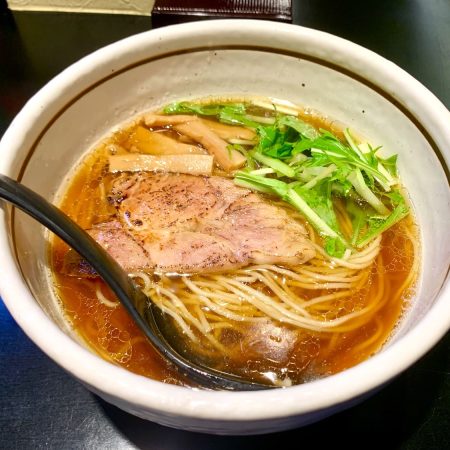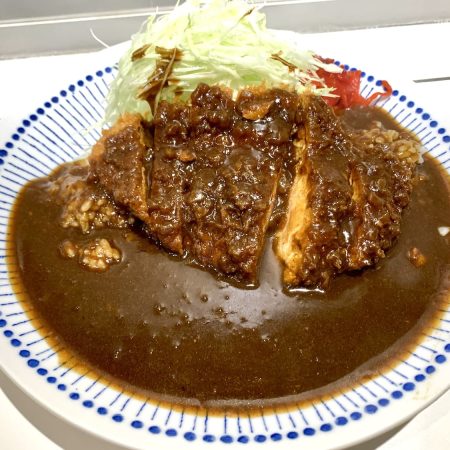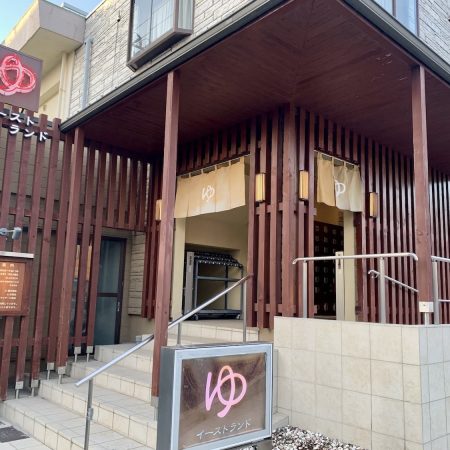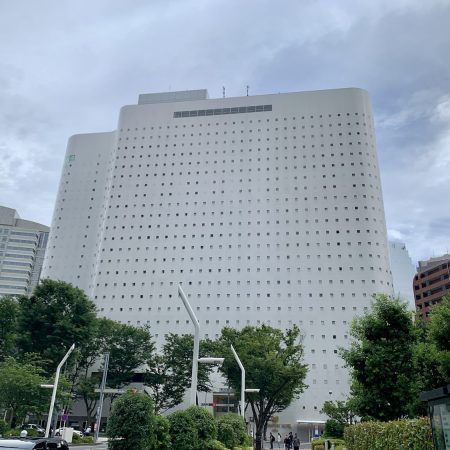Shibuya Ward in Tokyo is a vibrant and multifaceted destination, featuring attractions like Shibuya Center-Gai, which evolved from a low-lying area into a bustling youth culture hub post-World War II. Notable sites include the Hachiko Memorial Statue, symbolizing canine loyalty, and landmarks like Shibuya Sky and Shibuya 109, contributing to the cultural richness of the district. The Shoto Museum of Art, Miyashita Park, Meiji Jingu Shrine, Takeshita Street, Cat Street, and Yoyogi Hachimangu Shrine offer diverse experiences, combining art, nature, fashion, and spirituality.
Shibuya Center-Gai (渋谷センター街)
Shibuya Center-Gai, originally a low-lying area with water issues, transformed into a vibrant town by 1935 and later became a youth culture hub influenced by American trends post-World War II. Today, this dynamic district, extending westward from Shibuya Station’s Hachiko Exit, features diverse establishments like eateries, fast-food outlets, record stores, and gaming centers, attracting a substantial adolescent demographic.
Popular among junior high and high school students, Shibuya Center-Gai remains committed to fostering music, fashion, and subcultures like gyaru and gyaru-o. Despite changes, it continues to be a gathering spot for the young and restless, showcasing Japan’s latest trends and reflecting the energy of the country’s youth. The area actively engages in crime prevention and beautification initiatives to maintain a secure environment for its thriving shopping district.
Originally addressing Udagawa River-induced inundations, the post-Showa era brought an increase in eateries, earning Shibuya Center-Gai a reputation similar to Shinjuku’s bustling commercial district. Today, it has evolved into a bustling thoroughfare, attracting a diverse crowd, especially the younger demographic.
Governed by the June 20, 2019, “Halloween Ordinance,” Shibuya Center-Gai prioritizes a secure environment by prohibiting public alcohol consumption during Halloween, its preceding weekend, and the year-end and New Year holidays in specified areas around Shibuya Station.
Hachiko Memorial Statue (忠犬ハチ公像)
The Hachiko Memorial Statue stands as a poignant symbol of canine loyalty in Japan, spanning the late Taisho to early Showa eras. Renowned for faithfully awaiting its master’s return at Tokyo’s Shibuya Station, even after the owner’s passing, Hachiko, a male Akita born on November 10, 1923, in Niida village, Akita Prefecture, persisted in its vigil for nearly a decade.
Owned by Professor Hidesaburo Ueno of the University of Tokyo, Hachiko accompanied the professor to Shibuya Station on outings until tragedy struck in 1925, with Professor Ueno’s untimely death. Despite the loss, Hachiko continued its daily vigil at Shibuya Station.
A bronze statue immortalizing Hachiko was erected at Shibuya Station’s entrance, now known as the “Hachiko Memorial Statue,” symbolizing Shibuya. The statue, colloquially called “Hachiko-mae,” became a landmark and meeting point.
The story of Hachiko, featured in newspapers, moved the public, earning the dog the title “Chuken Hachiko” or Faithful Hachiko. In 1934, a bronze statue was installed at Shibuya Station, with the dog itself participating in the unveiling. Although the original statue succumbed to metal requisition during World War II, it was post-war reconstructed and remains a symbol of Shibuya and a notable meeting point.
Shibuya Sky (渋谷スカイ)
Shibuya Sky, located on the 47th floor of the Shibuya Scramble Square Tower at an altitude of 229 meters, provides a 360-degree panoramic view of Tokyo, including sights of the Tokyo Skytree and Mount Fuji. Going beyond a typical observatory, it is conceived as a “spatial apparatus,” offering a cohesive experiential narrative to stimulate intellectual curiosity and nurture imagination.
Online tickets for Shibuya Sky are available at rates of 2,200 yen for adults, 1,700 yen for middle and high school students, and 1,200 yen for elementary school students (on-site only, on the day of). Tickets for toddlers (3–5 years old) are 700 yen (on-site only, on the day of), while admission is complimentary for those under the age of 3. Additionally, an annual pass, allowing year-round access, can be obtained for 7,500 yen.
Evolving into a landmark in Tokyo, Shibuya Sky, with its elevation and captivating scenery, offers unique experiences. The picturesque views and immersive encounters provide visitors with fresh perspectives and foster imagination. Expected to be cherished by many, Shibuya Sky continues to shine as a symbol of Tokyo.
Shibuya 109 (渋谷109)
Shibuya 109, affectionately known as “Marukyu,” is a renowned fashion hub in Tokyo’s Shibuya district, attracting a diverse crowd of local and international patrons in their late teens to early twenties. The online platform associated with Shibuya 109 offers information on 109 shopping centers nationwide, showcasing the latest fashion, events, and entertainment content from popular stores and brands.
As Tokyo’s quintessential fashion destination since 1979, Shibuya 109, designed by architect Minoru Takeyama, has evolved into a cultural epicenter. Initially focused on men’s fashion, the 1980s saw a transformation with an influx of stores catering to women, solidifying its status during the gal culture boom of the 1990s.
With around 120 stores, Shibuya 109 goes beyond apparel, offering lifestyle products, cosmetics, and cafes. The building’s iconic cylindrical structure, adorned with the luminous “109” emblem, is a captivating sight at night. Collaborations with gal magazines like “Ranzuki” and “egg” make it a hotspot for fashion enthusiasts looking to emulate featured looks.
Beyond fashion, Shibuya 109 holds cultural significance, acting as a mecca for youth culture and subcultures. It has played a pivotal role in shaping Japan’s fashion industry, nurturing designers and iconic brands. Today, Shibuya 109 remains an ever-evolving force, influencing trends and refining aesthetic consciousness nationwide. When in Tokyo, a visit to Shibuya 109 is highly recommended.
The Shoto Museum of Art (松濤美術館)
The Shoto Museum of Art, established in 1981 by visionary Seiichi Shirai, is an architectural gem adorned with Korean granite, bronze grilles, decorative rafters, and a striking copper-plated roof. Designed by the Seiichi Shirai Research Institute, it features a captivating fountain at its heart, surrounded by an external atrium that harmoniously blends art and nature.
The museum actively contributes to the cultural tapestry through dynamic exhibitions, salon presentations, and enriching art classes. Originally housing “Salon Muse,” it shifted gears in March 2010 but maintained its commitment to art exploration.
Operating hours during special exhibitions are 10 am to 6 pm (extended to 8 pm on Fridays) and in February and March, from 9 am to 5 pm. Closure days include Mondays, the day after public holidays, year-end, New Year holidays, and exhibition rearrangement periods.
Conveniently located, the museum is a 15-minute stroll from Shibuya Station and a 5-minute walk from Kizimizui Station, making it an invaluable destination for art enthusiasts and culture aficionados. It serves as a hub for art exploration, focusing on German expressionism and the Bauhaus movement, with thematic celebrations featuring works by Japanese and international artists.
The unique architectural style, a manifestation of Shirai’s genius, combines geometric shapes, curves, and colors for an immersive artistic experience. Amenities like a library, curated shop, and café enhance engagement, while guided tours, art classes, and workshops enrich the overall experience.
Beyond its physical space, the museum actively fosters art appreciation in the local community, showcasing Japanese cultural treasures and solidifying its place as a dynamic cultural institution.
Miyashita Park (宮下公園)
Miyashita Park is a low-rise, multifaceted commercial facility strategically positioned at the confluence of Shibuya, Harajuku, and Omotesando, constituting iconic areas within the metropolis. Occupying an expansive space extending approximately 330 meters, it seamlessly integrates elements of nature, commerce, and hospitality, interweaving cultural permeation and diverse lifestyles.
Miyashita Park unfolds as a well-ventilated, expansive expanse, offering indulgences ranging from shopping and gastronomic exploration to sports and nocturnal pursuits. It metaphorically embodies a “four-tiered park” unveiled in the heart of Shibuya, inviting patrons to relish unrestricted experiences, embracing the emergence of a novel cultural nexus in the dynamic city, Shibuya.
The development of Miyashita Park leverages the Shibuya City Miyashita Park and has been repositioned atop the facility, complemented by its sub-level location utilizing the Park-PFI system. The verdant expanse of approximately 1,000 square meters, adorned with a green arch evolving with the passage of time, seamlessly integrates into the urban landscape, providing a leisurely retreat.
This establishment serves as a nexus where diverse cultures intermingle, mutually inspiring, rendering it a locale that adds intrigue to the global tapestry. Miyashita Park emerges as a new thoroughfare disseminating next-generation culture not only within Tokyo but resonating across the global stage.
Meiji Jingu (明治神宮)
Meiji Jingu stands as a majestic tribute, towering in honor of Emperor Meiji and Empress Shoken. Born in 1920 and reborn from the ashes of World War II in 1958, this Shinto shrine exudes a spellbinding sacred beauty across its vast 73-hectare realm.
Within the precinct, a grand artificial forest, housing an astonishing 100,000 trees, invites you to immerse yourself in the tranquility of nature. Once graced by Lord Kato and the Ii family, the hallowed grounds now resonate with verses from Emperor Meiji and Empress Shoken, delicately etched into unique omikuji.
Embarking on a centennial mission, the shrine endeavors to restore the ceremonial splendor of Empress Shoken’s attire, adding regal magnificence to this already captivating site. Unfolding its intricate secrets, Meiji Jingu reveals hidden gems such as the enchanting inner garden, the inspiring Seitoku Kinen Art Gallery, and the historic Meiji Memorial Hall.
Beyond being a religious haven, Meiji Jingu transforms into a vibrant canvas hosting festivals, ceremonies, and traditional Shinto weddings. Divided into the Naien and Gaien areas, this cultural landmark transcends its roots, attracting over three million visitors annually. They embark on a journey enticed by the allure of its rich history and the palpable sacred atmosphere that permeates every corner.
Accessible through the JR Yamanote Line or Tokyo Metro, Meiji Jingu is not merely a shrine—it’s a serene escape and a cultural immersion. Seamlessly blending tradition with the heartbeat of modern Tokyo, it stands as a tribute to Japan’s past, a celebration of its present, and an invitation to all who seek a glimpse into the soul of this vibrant city.
Takeshita Street (竹下通り)
Takeshita Street, located in the Jingu-mae district (Harajuku) of Tokyo, is a bustling commercial thoroughfare known for its vibrant atmosphere. Positioned strategically in front of JR Harajuku Station, it experiences a surge in foot traffic during weekends, holidays, and vacations. The street is lined with diverse establishments, including flamboyant fashion boutiques and quaint cafés, offering a range of distinctive products.
Famous for its accessibility and charming wares, Takeshita Street showcases cute fashion items, sundries, and confectioneries. It has become a hub for idiosyncratic cafes, evolving from its historical reputation for takeout options like crepes. The street caters to various styles, from trendy youth-focused fashion to vintage garments, attracting tourists from both domestic and international locations, especially students and foreign visitors.
Takeshita Street holds a prominent place in the kawaii culture, originating in 1974 and evolving into a global attraction. Its history, influenced by bamboo groves and Western styles post-war, is reflected in its vibrant shops, diverse fashion, and sweet treats. Beyond being a fashion hub, the street symbolizes youth, liberty, and ingenuity in Japanese culture, making it an essential global destination.
Cat Street (キャットストリート)
Cat Street stands out as a prominent tourist destination, adorned with an array of boutiques lining the promenade. It is abundant in photogenic spots, such as the facial cutout panel in front of “B-SIDE LABEL,” a store specializing in pop character goods. Seize the opportunity to capture a commemorative moment in these photo spots seamlessly integrated into the cityscape.
Noteworthy for its variety, Cat Street boasts numerous vintage clothing stores. Take, for example, “Flamingo,” a shop that curates vintage and deadstock items from renowned brands, offering a trove of rare finds. Another gem is “Ragtag,” which specializes in recycled vintage clothing, presenting items in such pristine condition that their pre-owned nature is inconceivable. The prices here are not only reasonable but also irresistibly alluring.
Within its confines, “Tiffany Cat Street” hosts the inaugural Tiffany Café in Japan, allowing visitors to immerse themselves in the luxury of the renowned jewelry brand Tiffany in a familiar setting. Beyond jewelry, the establishment showcases an array of items, including tableware, bags, and more, solidifying its position as a street at the forefront of trends.
Yoyogi Hachimangu Shrine (代々木八幡宮)
Established in 1212 during the Kamakura period by Araki Geki Tomoakira, a close aide to Minamoto no Yoritomo, the Yoyogi Hachimangu Shrine has a rich history. Following Yoritomo’s assassination, Tomoakira received a divine revelation and constructed the shrine, which is consecrated by Tsurugaoka Hachimangu. The annual festival is held on September 23.
Situated in Shibuya Ward, the shrine’s precincts house a valuable natural forest, preserving the essence of the former Musashino region. With diverse vegetation, including Japanese cedars and camphor trees, and archaeological findings from the Jomon period, the site is designated as a historical site by Shibuya Ward.
Yoyogi Hachimangu is an ancient Shinto shrine dedicated to the deity Hachiman. Its impressive entrance features a 12-meter torii gate, stone lanterns, and a picturesque garden. Hosting vibrant festivals and serving as a sanctuary for students and couples, the shrine pays homage to Hachiman, symbolizing protection in various domains. Visitors experience a profound connection with their heritage, immersing in Shinto traditions and embarking on a transformative spiritual journey.

